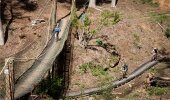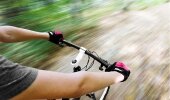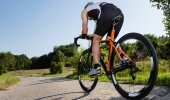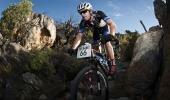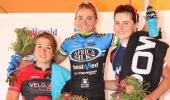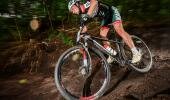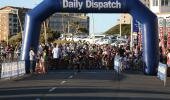Words & Photos: Dawid de Wet
We came upon the lone buffalo bull late in the afternoon on day four of our mountain bike adventure from Port Elizabeth to Victoria Bay through Patensie, the Baviaanskloof, Uniondale, Avontuur, The Prince Alfred’s Pass, Knysna, Phantom Pass, Karatara, and George. We were in the Baviaanskloof Mega Reserve on what was supposed to be our toughest day of the trip. It did turn out to be a long, but exciting day and then it suddenly got more exciting. The buffalo moved to the side of the road. He did not like what he saw and neither did we.
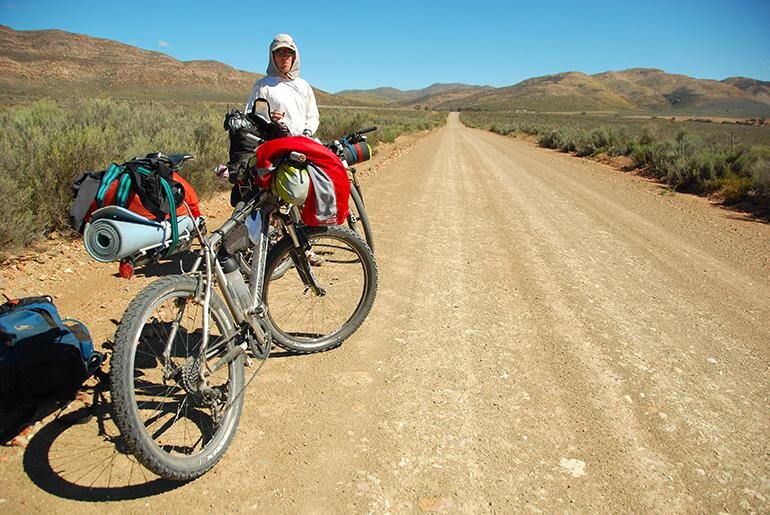
Photo credit: Dawid de Wet
We are a group of cyclists who enjoy Tuesday evening and weekend rides in and around Pretoria, and needed something more adventurous. Our intention was to travel five hundred plus kilometres in eight days with all our camping equipment strapped to our bicycles and without back up. Our captain for the cruise, Wynand Steyn, came up with the route as he had done most of it previously by either vehicle, motorbike, or bicycle. His excitement, sense of adventure, and passion for this part of South Africa was inspiring and there was no opting out of this adventure. I was keen to push my boundaries and explore an area unknown to me. We combined our tour with raising awareness for the blue crane, through the Endangered Wildlife Trust’s Save our Cranes project. We realised that this beautiful bird deserves more attention and we hoped to see some along the way. We eventually did see three pairs of our national bird, and much more.
After a mountain of organising and a relatively sleepless night, we disembarked in Port Elizabeth and assembled our transportation. The road to Patensie was a long slog of around 100 km and we arrived in the small town after dark. It would still take a couple of days for our bodies to get used to the hammering of sitting in the saddle for most of the day. We headed for the only lights in town, the hotel, and the smell of citrus blossoms filled the air. We spoilt ourselves with a lovely dinner, drinks in the bar with the locals, and soft white linen. From here on in, we would be on gravel roads and sleep in our tents. The adventure had begun.
The thermometer was heading for the mid forties as we left Patensie for Kudu Kaya, in the Baviaanskloof and outside the Baviaanskloof Nature Reserve's gate. We stopped for a swim at Bruintjieskraal. The day’s riding was not too rough and we indulged in a bit of sightseeing. This continued the next day as we explored the Ysrivier and its eight pools, one deeper and colder than the other.
To cycle through the Baviaanskloof Nature Reserve one needs vehicle back-up in case of an emergency. We were fortunate to have Rob Wijnants and his friends from Patensie accompany us, and they even loaded our luggage on their bakkie. This was day four of the tour and it would be the day of long climbs, fast downhills, river crossings, rain, beer and braaivleis for lunch (compliments of the back-up crew), and the most diverse and beautiful scenery that a ride can offer in our country, as well as two of the big five. We were fortunate to have a good view of a black rhino cow and calf from the bicycles. This was the highlight of the tour, and then there was the buffalo.

Photo credit: www.shutterstock.com
The good people from Patensie had to turn back to get out of the park before closing time, so We were left staring at the bull without the back-up of boerewors and beer. And he stared back. He made an excited jump towards the nearest thorn tree and then disappeared from sight. With little more than just enough bravado, we raced past him as a group. Just past the place where he was standing a moment before, we stopped, but only for a second as we heard a loud snort and branches breaking. We sped off and only stopped much further down the road in a fit of laughter and adrenalin.
We arrived at Doringkloof Bush Camp with frozen feet and the last light of the day gone. It started to drizzle and continued to do so throughout the night. The next day we passed Bakkrans, the Studtis area with its impressive fig forest and warm fountain, and a quaint little padstal and Vero’s Restaurant with the best refreshments in the Kloof, on our way to Uitspan Guest Farm. Uitspan’s people, like the rest in the Kloof, were very warm and welcoming and we had a great stay in their beautiful campsite. Here we also had the lowest temperature on tour with the night-time temperature dropping to between 3 and 5 degrees Celsius.
From there, we cycled past the Baviaanskloofsleutel, a piece of jutting rrock that could close the road into Kloof if it tumbles from its host rock. The Baviaanskloof reaches its western boundary at the top of the Nuwelkloofpas, where we turned to Uniondale and enjoyed a very fast section for five kilometres.
The undulating road was very inviting after the steep climbs of the Baviaanskloof. On the way to Uniondale, we had a couple of medical emergencies, but it did not deter us from arriving before the shops closed. By this time, we were in the mood for a wholesome meal.
The next day was a very easy cycle past Avontuur and down the Prince Alfred’s Pass to De Vlugt and Angie’s G Spot. We spoilt ourselves with scones at Tannie Annatjie’s shop and a swim in the river. The cycle down to De Vlugt was exhilarating and fast.
It was overcast as we headed to Knysna the next day. We had an early start as most of the way comprised of climbing. None more so than Dieprivier se Hoogtes. It was a wonderful day of different vegetation and scenery, and the Knysna Forest provided us with the hope of seeing one of its rare elephant to add to our list of Big 5 spotted. Unfortunately this was not the case, so we made our way to Knysna for some fish and chips, brownies, and locally brewed beer.
The last full day of cycling arrived with an empty feeling. My body and bicycle were finally starting to understand each other. My luggage fitted perfectly and I felt strong. But my mind reminded me that soon this great adventure would be a thing of the past. But first, we had more passes to negotiate. Phantom Pass and Homtini Pass took us past Karatara. The Seven Passes Road took us along the last stretch to George, and the landscape changed as frequently as our gears. Indigenous forest gave way to plantations and farmland. The overcast conditions were a perfect reflection of my inner atmosphere, as we peddled into George and on to Victoria Bay.
Victoria Bay was a serene and sunny end to our journey. One that I would happily repeat if not for our next adventure - to pick up where we left the trail and continue all the way to Cape Town through the interior. Unfortunately, this route might be missing our favourite part - lone buffalo bulls.
We did get to see six blue cranes along the way. It was very pleasing to know that they can still be found in this remote landscape, as most of the birds I have previously seen are located in the Overberg region. We were also encouraged by people sending in pictures of birds that they have spotted, especially a pair with chicks just outside of McGregor in the Western Cape.
DARE TO CARE FOR A CRANE TODAY
South Africa’s National Bird is missing in action!
FACT: The blue crane population diminished by 80% in two decades.
FACT: There are currently around 4,000 grey crowned cranes left in our country.
FACT: There are less than 22,000 blue cranes currently recorded.
FACT: There are only 235 critically endangered wattled cranes left in South Africa.
FACT: Loss of habitat, collision with power lines and the illegal animal trade are the biggest threats to South African cranes.
A South Africa without cranes means a South Africa without …
• Charismatic indicators of the health of our grasslands and wetlands. By promoting crane conservation we play a role in encouraging safe environmental practices, environmental education and sustainable utilisation of these resources for the benefit of all.
• Ecotourism and job creation. Ecotourism is blossoming in South Africa, with birding trips in particular growing at a rapid rate.
• National pride.
• Distinctive symbols of typical South African landscapes.
Cranes are symbols of peace and longevity. Stand behind the Endangered Wildlife Trust and help them to fight for the peace and longevity of these beautiful species, thus ensuring that Mother Nature never has to file another missing species report again. Dare to Care for a South African Crane today.
source: www.givengain.com
If you would like to make a donation, visit:
www.givengain.com/activist/105698/projects/6455/
or
www.givengain.com/cgi-bin/giga.cgi?cmd=cause_dir_project&cause_id=2347&p...
For more information on the blue cranes' plight, visit www.ewt.org.za


